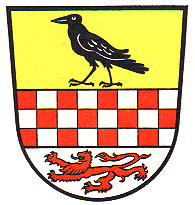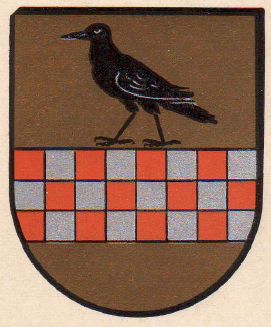Kierspe: Difference between revisions
Knorrepoes (talk | contribs) m (Text replacement - "/Arms of " to "/Arms (crest) of ") |
Knorrepoes (talk | contribs) m (Text replacement - "{{media}}" to " {{de1}} {{media1}}") |
||
| Line 27: | Line 27: | ||
[[File:kierspe2.jpg|center|alt=Wappen von {{PAGENAME}}/Arms (crest) of {{PAGENAME}}]] | [[File:kierspe2.jpg|center|alt=Wappen von {{PAGENAME}}/Arms (crest) of {{PAGENAME}}]] | ||
{{ | |||
{{de1}} | |||
{{media1}} | |||
[[Civic Heraldry Literature - Germany|'''Literature''']]: Stadler, K. : Deutsche Wappen - Bundesrepublik Deutschland. Angelsachsen Verlag, 1964-1971, 8 volumes; Meyer, 1940. | [[Civic Heraldry Literature - Germany|'''Literature''']]: Stadler, K. : Deutsche Wappen - Bundesrepublik Deutschland. Angelsachsen Verlag, 1964-1971, 8 volumes; Meyer, 1940. | ||
Revision as of 11:41, 26 December 2022
This page is part of the German heraldry portal |
Heraldry of the World |
|
German heraldry:
|
Selected collector's items from Germany:
|
KIERSPE
State : Nordrhein-Westfalen
District (Kreis) : Märkischer Kreis (1969-1975 Lüdenscheid, until 1969 Altena)
Additions : 1969 Amt Kierspe, Rönsahl
| German | |
| English | No blazon/translation known. Please click here to send your (heraldic !) blazon or translation |
Origin/meaning
The arms were granted on July 29, 1969 and are identical to the arms of the former Amt Kierspe.
The chequered bar is derived from the arms of the Counts of the Mark, as the area historically belonged to the County of Mark. The lion in the base of the shield is derived from the arms of the Dukes of Berg and was part of the arms of Rönsahl. The crow is based on the nickname of the inhabitants of the village Rauk (rook, crow).
Previously the town used the arms below, which were identical, but without the lion. These arms were granted on October 17, 1935.
Literature: Stadler, K. : Deutsche Wappen - Bundesrepublik Deutschland. Angelsachsen Verlag, 1964-1971, 8 volumes; Meyer, 1940.



